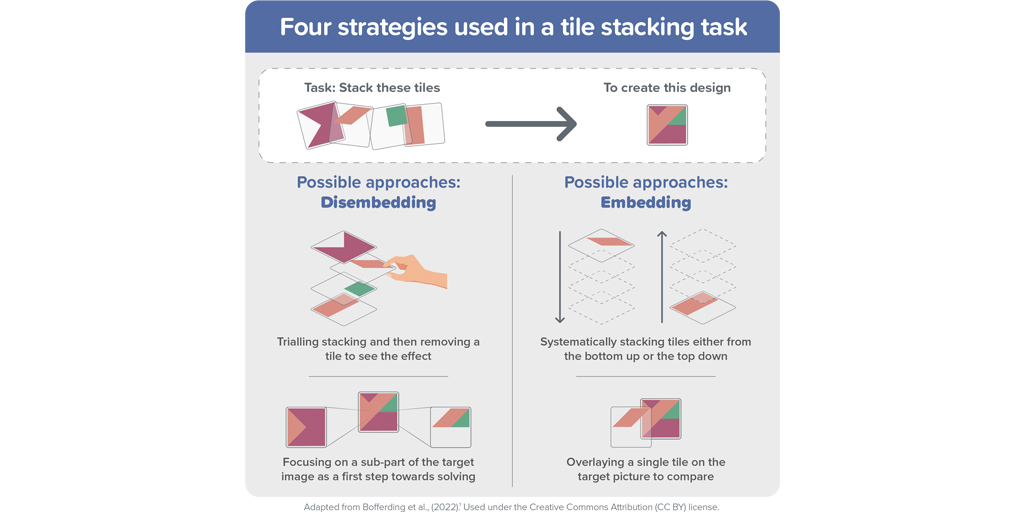19 July 2023

What does research suggest about building up and breaking down 2D and 3D shapes?
- A general strategy of exploration, alongside building understanding and using specific vocabulary, is suggested to support understanding of and familiarity with 2D and 3D shapes
- Student experiences with shapes should include drawing, describing and playing with a range of straight and curved edged examples (not just polygons)
- Students can be encouraged to develop skills of composing and decomposing through hands-on experiences with shape that include exploration, trial and improvement, and intentional prediction and planning
- Useful student experiences that help develop fluent geometric composition and decomposition may include manipulating pattern blocks, making shapes, combining/taking apart shapes and repeating combinations iteratively
- Providing activities that use overlapping shapes to make a target image (see infographic) can support students’ embedding and disembedding; scaffolding these tasks to attend to colour, orientation and order at different stages may be helpful
- Constructing and deconstructing when building with 3D shapes develop skills that progress from random placements of shapes to planned construction which utilises their properties
- Structuring block play can support the development of spatial reasoning and scaled construction skills, and setting tasks within a storytelling context may increase engagement and spatial visualisation
View Espresso